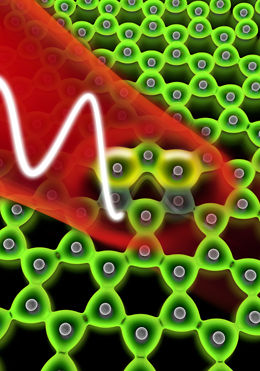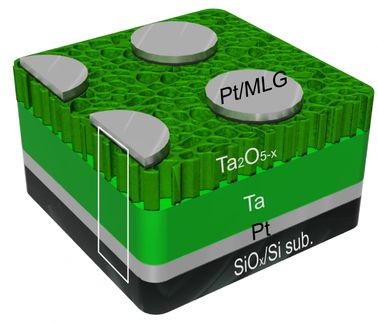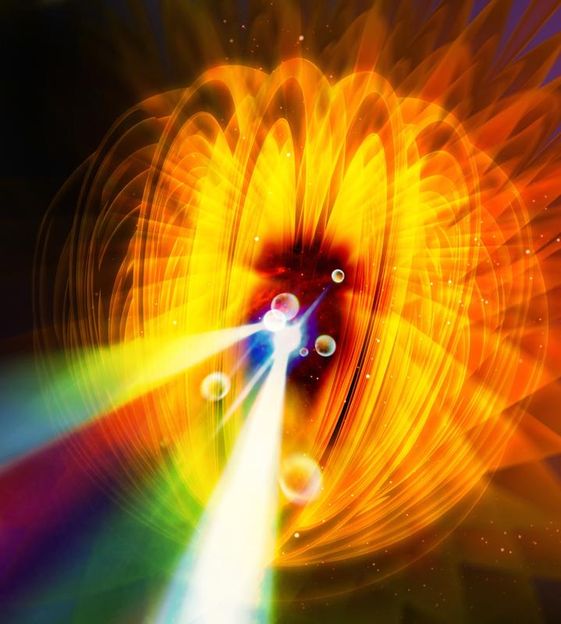High-speed march through a layer of graphene
Electrons hit by strong laser pulses change their location on ultrashort timescales, i.e. within a couple of attoseconds. In cooperation with the Center for Nano-Optics of Georgia State University in Atlanta (USA), scientists at the Laboratory for attosecond physics (LAP), which is run jointly by LMU Munich and the Max Planck Institute for Quantum Optics, have made simulations of processes that take place when electrons in a layer of carbon atoms interact with strong laser light. The purpose of these simulations is to gain insight into light-matter-interactions in the microcosm. A better understanding of the underlying physical processes could lead to light-wave driven electronics that would operate at light frequencies, which is a hundred thousand times faster than state-of-the-art technologies. graphene with its exceptional properties is considered to be very well suited as an example system for prototype experiments.

A laser pulse hits a two-dimensional layer of graphene and dislocates the electrons of the carbon ions
Christian Hackenberger
The closer we observe the motion of electrons, the better we understand their interaction with light. Many phenomena that arise in condensed matter due to strong-field light-matter interaction are not yet fully understood. As the underlying processes occur within femto- or even attoseconds, it is difficult to access this intra-atomic cosmos: a femtosecond is a millionth of a billionth of a second; an attosecond is even a thousand times shorter. Experimental methods that shall cope with this challenge are at a development stage. However, it is possible to investigate these processes with the help of numerical simulations.
The team of scientists from LAP and Georgia State University has calculated what happens to electrons in graphene interacting with an intense laser pulse. The laser field excites and displaces electrons, changing thus the charge density distribution. During this process, an extremely short electron pulse is scattered off the probe. The diffraction map of these matter waves reflects how the electron density distribution inside the graphene layer has been altered because of the laser pulse.
These simulations have revealed complex relations between the excitation of valence electrons by light and their subsequent ultrafast motion inside and between the carbon atoms in the graphene layer. Valence electrons are weakly bound and shared among neighbouring atoms. The scientists investigated their motion by identifying microscopic volumes that represent various chemical bonds and analysing the electric charge contained in these volumes. During a laser pulse, there is a significant redistribution of the charge; at the same time, the displacement of the electrons caused by the electromagnetic field of the laser pulse is very small, less than a picometre. In addition to that, the calculations showed that the light-induced electric current has an inhomogeneous microscopic distribution, flowing along the chemical bonds between the carbon atoms.
Original publication
Other news from the department science

Get the chemical industry in your inbox
By submitting this form you agree that LUMITOS AG will send you the newsletter(s) selected above by email. Your data will not be passed on to third parties. Your data will be stored and processed in accordance with our data protection regulations. LUMITOS may contact you by email for the purpose of advertising or market and opinion surveys. You can revoke your consent at any time without giving reasons to LUMITOS AG, Ernst-Augustin-Str. 2, 12489 Berlin, Germany or by e-mail at revoke@lumitos.com with effect for the future. In addition, each email contains a link to unsubscribe from the corresponding newsletter.




























































